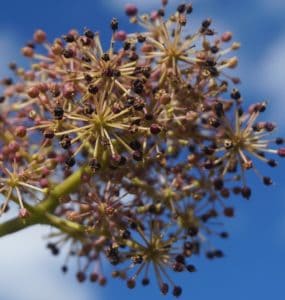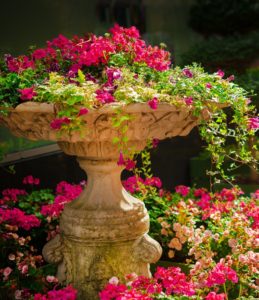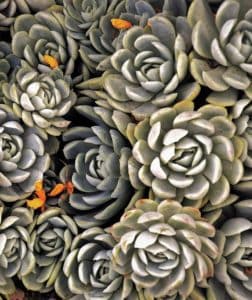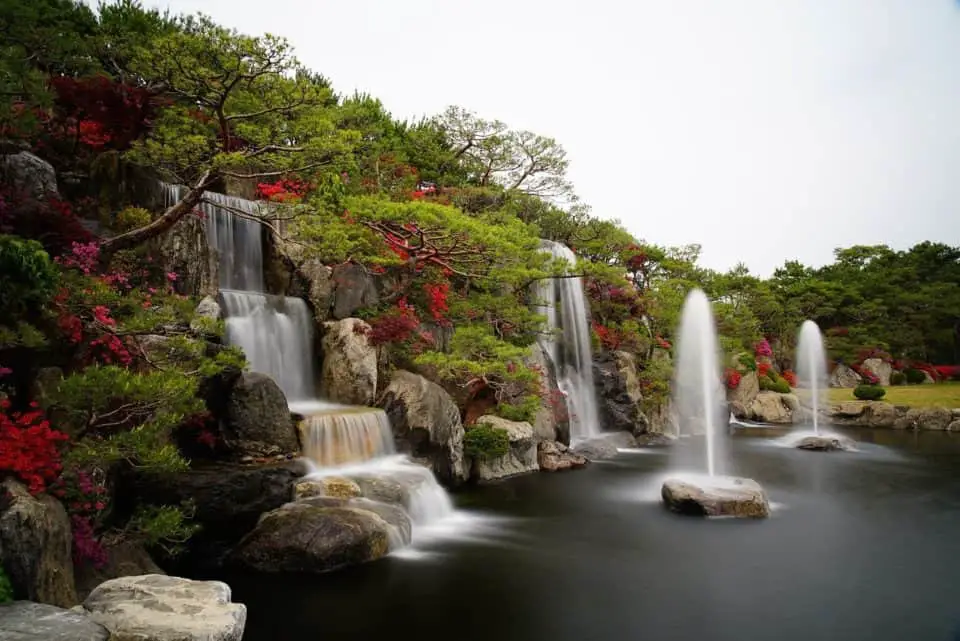Some links in the post are affiliate links and I get a commission from purchases made through some links found in the post.
The Ming Aralia (Polyscias fruticosa) is not your typical beginner plant. It requires much more care compared to other indoor plants.
However, it’s not impossible to make this plant thrive even when you have little experience in gardening.
We will cover the most common problems faced when growing a Ming Aralia and how you can deal with them.
What are the Common Problems With a Ming Aralia?
The common reasons you get problems with your Ming Aralia is overwatering, bad soil conditions, being pot bound, lighting, pests and diseases, low humidity and cold temperatures. These can lead to yellowing, browning and drooping leaves on your Ming Aralia plant.
1) Yellowing Leaves on a Ming Aralia
 Anytime you see the leaves turning yellow, take it as an indication that your watering schedule needs some amends.
Anytime you see the leaves turning yellow, take it as an indication that your watering schedule needs some amends.
You could be overwatering the plant or could have planted it in a soil mix that is not well-draining.
The pot can also be to blame as it may not have enough exit holes or may be sitting on water, thus preventing a free flow of the excess water.
In this case, you can amend the watering schedule as you look into whether any root rot has occurred.
You can do this by tipping the pot over and removing the plant to check the roots. If they appear soggy, you may have to repot the plant as you get rid of the damaged sections.
However, you should also note the rate of yellowing. If it happens gradually, this indicates that the soil no longer has adequate nutrients.
It does not mean that you should immediately start adding inputs to the soil as too much fertilizer can damage the roots. Instead, you will need to amend the fertilization schedule.
Let’s look at all these possible causes and their solutions in detail:
1) Ming Aralia Watering Schedule
The Ming Aralia is a bit complicated when it comes to watering requirements.
On one hand, it likes moisture and will do well in moist conditions. On the other hand, it is susceptible to root rot, and giving it more water than it needs could kill it.
As such, you always have to strike a balance between denying it water and overwatering it.
Underwatering is also bad, but not as damaging as too much water. In fact, the Ming Aralia will notify you when it has less water by shedding its leaves.
If you see this, start adding more water to the soil but carefully. Ideally, you should only water the plant when the two top inches of the soil are dry.
Otherwise, you can let it sit in the moist soil. The good thing is that the plant can survive long periods of neglect.
You are safer letting it lie on the dry side as opposed to killing it with root rot.
The conditions of your home also determine how much water you should give the soil. If you live in a hot area with bright light, you might need to moisten the soil often.
However, if you live in a colder region, you may want to hold off on the water. Even so, you should never let the rootball dry completely. Only allow the top two inches to dry.
When watering, do so thoroughly such that you flush the soil with water. Allow the excess to drain and return the pot to its original position.
During the colder months, amend the watering schedule and give the plant less water but don’t let the rootball dry.
You may also have to check the state of the leaves to gauge if the water you use is good for the plant.
Using alkaline or mineralized water can lead to white deposits appearing on the leaves. If this happens, you may want to try rainwater or other pure sources.
If you need help watering your ming aralia plant, try using this automatic drip irrigation kit.
2) Soil Conditions for a Ming Aralia
The good news is that the Ming Aralia does not require you to go out of your way when it comes to the soil.
As long as you make sure the soil is well-aerated and well-draining with a pH of 6 to 6.5, the plant should do well.
This slight acidity is easy to achieve with organic materials you can get straight from your waste bin or a nearby nursery.
Most people use peat moss with perlite, pumice, or coarse sand to enhance the drainage capability of the potting mix while allowing it to retain just enough water to help the plant survive.
The last thing you want is to drown the roots in water as this can encourage root rot which would kill the plant.
If you’re not sure what combo works best for your plant, try and work with potting soil, inorganic materials, and peat moss in equal parts.
That should work the magic. And again, watch out for the watering frequency.
3) Pot Size for a Ming Aralia
 In most cases, you will hardly ever need to repot your plant. You’ll find that many people avoid repotting because it stresses the plant and makes it shed leaves.
In most cases, you will hardly ever need to repot your plant. You’ll find that many people avoid repotting because it stresses the plant and makes it shed leaves.
The good news is that the plant recovers over time as long as you give it the right care.
So, what happens when the plant is rootbound? You can repot it. But to be safe, allow the pot to fill with roots so that you will only repot the plant a few times, ideally every three years.
However, if you want the plant to be small, you may want to space out the repotting even more, as long as it does not affect the life of the plant.
If you notice, though, that water overflows when you water the plant, it might be time to move the plant.
The same holds if you notice yellowing on the leaves. For the most part, as long as you fertilize the soil often, the plant can remain in the pot for a considerable time before you need to move it.
Does size matter? Not so much as long as the roots have not filled the pot.
Also on this, you should make sure the pot has enough drainage holes; else, the roots will sit in water, triggering root rot.
You may want to look into this before amending the watering schedule. Many people like increasing the humidity of the plant by having the pot sit on water.
While this is a good idea, you should use a pebble tray as the pebbles can support the pot and allow it to drain excess water. Otherwise, the pot would sit on water constantly, drowning the roots.
Spring is the best time to repot the plant. You’ll know it’s time to repot if the rootball has filled the pot and some large roots have circled the bottom of the pot.
Additionally, you may have to repot if the plant has suffered root rot.
When repotting to cover for damage, you don’t need to go up a pot size. But if the repotting results from the plant being rootbound, go up only one pot size.
If you’re enjoying this article, check out our article on how to fix your oxalis (purple shamrock) problems.
4) Fertilization for a Ming Aralia
The plant needs fertilization three times a year only during the growing seasons. Try this easy to use fertilizer to give your plant that little boost.
However, if you live in a cold region, the plant will need less fertilization. Keep in mind that overfeeding soil has worse effects compared to underfeeding the plant.
When your plant has fewer nutrients than it needs, the leaves start yellowing.
In this case, you can use half of NPK 10-10-10 to stimulate its growth. Only do this in active growing seasons and never feed the plant during winter.
2) A Ming Aralia Dropping Leaves
It’s natural for the plant to shed its leaves naturally during the year.
As long as there is new growth at the top, you should not be too concerned about it.
However, if the leaf drop is too much, you may need to look into your care practices. It can result from:
Movement
If you have recently bought the plant and moved it into a new home, you will likely notice leaf drop in the first few instances.
The plant reacts to stress by shedding leaves. But as soon as it establishes, it will be fine. The same goes for when you repot the plant. It’s normal and will be over soon.
Poor Care Practices
If the plant has not been moved or re-potted and is losing leaves, you may need to look into issues such as:
- Low humidity
- Overwatering or underwatering the plant
- Underfeeding the plant
- The need for repotting
- Salt residues owing to too much fertilizer in the soil
If you notice any of these problems are to blame for the leaf drop, address them and your Ming Aralia should go back to moderate leaf shedding.
3) Browning Ming Aralia Plant
If the leaves and stems start turning brown, it could be that the plant is receiving too little light and could be having watering issues.
You can fix this by addressing the watering concerns and looking into the lighting.
Lighting
The Ming Aralia does well in moderate indirect light though it can still thrive in gentle sun.
In dim light, the stems become leggy and thin and the leaves start to pale.
Keep the plant in a location with bright light and protect its leaves from direct sun exposure using sheers.
If your ming aralia plant is struggling due to light, trying using this to help regulate the lighting.
Pests and Diseases
If your plant is healthy, you will hardly have to worry about pests and diseases.
If you find an infestation, you may need to question your care practices and what you can do better.
For example, in low humidity, spider mites can attack the plant. You would then need to increase the humidity. Other pest problems on your Ming Aralia include:
- Mealybugs
- Nematodes
- Whiteflies
- Aphids
- Armored plant scales
Take the example of mites. These can attack an underwatered plant.
Can Ming Aralia be Grown Indoors?
Yes. It’s very easy to grow a ming aralia plant indoors as long as you provide:
- Good ventilation
- Adequate lighting – bright and indirect light
- High humidity- at least 50%
- Controlled temperatures- 65ºF (18ºC) to 85°F (29°C). Anything lower than 15°C can induce dormancy.
During the growing season, the plant can thrive more in the outdoors. However, note that each move will come with substantial leaf loss.
Final Thoughts: How to Fix Your Ming Aralia Problems
 As long as your Ming Aralia is getting bright indirect light and grows in well-draining, moist and aerated soil, it should not have any problems doing well.
As long as your Ming Aralia is getting bright indirect light and grows in well-draining, moist and aerated soil, it should not have any problems doing well.
You can make it thrive even more by watching the temperature range, increasing the humidity, and fertilizing it during the growing seasons.
For added beauty, do not forget to prune and shape this plant.
Before you go, here are some more related articles I encourage you to read below to help solve more of your gardening issues:
Best tall indoor plants for low light
Common Dieffenbachia Problems and How to Fix Them
How to Fix your Schefflera Plant Problems
How to Fix your Sago Palm Problems
Happy Gardening!
Written by: Daisy Njeri


